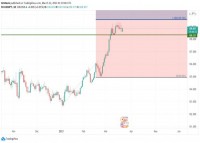|
Opalesque Industry Update – The relevant indexes play a key role in evaluating the
performance of hedge funds. However, their limitations should not be overlooked. In
addition, taking a longer-term view and accounting for interest rates, which are currently
at very low levels around the world, are both of central importance. With the risk-free rate
of interest below 0.25%, return expectations above even 3.5-4% seem aggressive at
present. At a media conference organized by the Swiss Funds Association SFA, Ken Heinz, President of Hedge Fund Research, Inc., Chicago, spoke about the significance and limitations of hedge fund indexes and quantitative market analysis. Since hedge funds are neither publicly traded nor obliged to publish performance data in most countries, calculating an index is no easy task. Heinz, who is responsible for some of the most widely used indexes in the international hedge fund industry, explained the various index types. “There has been a broad data basis for the HFRI indexes since 1990, and they now cover more than 2,200 funds. The investable HFRX indexes are based on a smaller number of funds with more than USD 50 million of invested assets each that are run within a managed account structure,” he said. The total assets under management in hedge funds today amount to some USD 1,600 billion. Net asset inflows were recorded in both the first and second quarters of 2010. Elements of qualitative analysis also flow into the overview of volumes in the global hedge fund industry that is published every quarter – besides missing data, questions of segregation are also vitally important. A look at the performance figures for the period from the second quarter of 2009 to the second quarter of 2010 shows a wide dispersion of results with significant variance: while the best 10% of hedge funds posted an average gain of 52.2%, the worst 10% posted an average loss of 16.78%.
It pays to take a long-term view “Up-to-date short-term performance figures are published regularly – but the longer-term ‘strategic’ view is often ignored,” he warned. Between 1970 and 2009, hedge funds and funds of hedge funds achieved considerably higher value growth than equities and bonds. The annual performance of hedge funds and funds of hedge funds was 11.8%, whereas equities gained 9.9% a year and bonds 8.1%. During the financial crisis, hedge funds succeeded in minimizing losses in value compared with other asset classes. With an estimated annual return of 6%, hedge funds will have recouped their losses by 2011. The S&P Global 1200 Financials Index, on the other hand, could take until 2021 to do the same. “From a longer-term perspective, hedge fund allocations provide solid downside protection thanks to active risk management,” explained Ineichen.
Low interest rates pose a challenge “As far as interest rates are concerned, we are in a comparable situation to Japan. Low interest rates have serious consequences for the entire financial sector, hedge funds included. Besides generally lower equity returns, the risk of deflation in particular rises, and pension funds and insurers find it increasingly difficult to meet their minimum return requirements. With the risk-free rate of interest below 0.25%, return expectations above even 3.5-4% seem aggressive at present,” said Hans-Jörg Baumann, Chairman of the SFA’s Alternative Investment Council and CEO and Chairman of Swiss Capital Alternative Investments. He added, “Obtaining risk premiums of 3-5% over the risk-free rate, which is at an all-time low right now, requires an active investment approach, and this is one of the central tasks of a hedge fund manager – to preserve capital while at the same time taking carefully calculated risks.” (press release)
The Swiss Funds Association SFA, which was established in Basel in 1992, is the representative association of the Swiss fund and asset management industry. These cover more than 95% of the fund assets distributed in Switzerland.
|
Industry Updates
Swiss Funds Association on hedge fund performance: assessing indexes and interest rates correctly and taking a long-term view
Monday, September 06, 2010
|
|





 RSS
RSS





